What is Earned Media? [Complete Guide with Tactics]
As part of your journey into the adventurous world of digital marketing, you might have stumbled upon a term unknown to you – earned media.
So what is it? How do digital marketers work with earned media, and how do they achieve their marketing goals with it?
Our guide today will get you answers to these questions and dive into the intricacies of how to earn earned media.
What is Earned Media?
Earned media is any type of content that other websites, journalists, or individuals have written about your brand organically without you paying them to do so.
Earned media usually appears in many forms, including news and social media posts. We will discuss its formats in more detail later on, but first, let’s understand the importance of earned media.
Why is Earned Media Important?
The most crucial benefit you can get with earned media is its authenticity and organic nature.
Earned media generates word-of-mouth that is much more trustworthy than advertising, with 83% of consumers trusting the former more based on Nielsen research.
Apart from that, earned media is also a great source for lead generation as 25% – 40% of potential customers come from this source, according to Crazy Egg.
So, earned media seems important, but how is it different from owned and paid media? We will look at their differences coming up next.
Earned Media vs. Owned Media vs. Paid Media
Despite having similar names, earned, owned, and paid media are very different from each other.
If we visualize their differences, it will look like this.
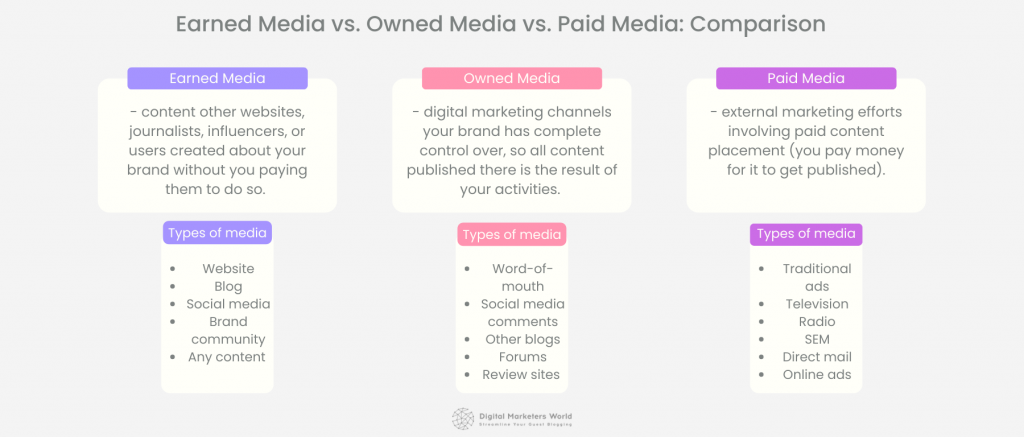
Now let’s define the other types of media and understand what they are about.
- Owned media: This is any property on the web you own and can control – the company’s website, blog, or social media channel.
- Paid media: This is all the traffic that you get from your paid channels such as PPC, display ads, sponsorships, and referral or affiliate marketing.
As we have cleared any confusion you might have had with the term earned media, we can go ahead and learn about its types.
5 Examples of Earned Media
Organic mentions and earned media can come in many forms, depending on who mentions you and through which medium they do it.
Here are five common examples of earned media to better understand their types and how they work.
Example #1: Word-of-mouth recommendations of a brand
We begin with the most ordinary yet the most effective ways your brand can get mentions – word-of-mouth.
You should never underestimate the power of word-of-mouth as it can be up to 5 times more effective than paid advertising.
Word-of-mouth mentions usually happen in chats, forums, and social network groups when people recommend products to their peers.
Here is a typical case of word-of-mouth from a specialized social media community.
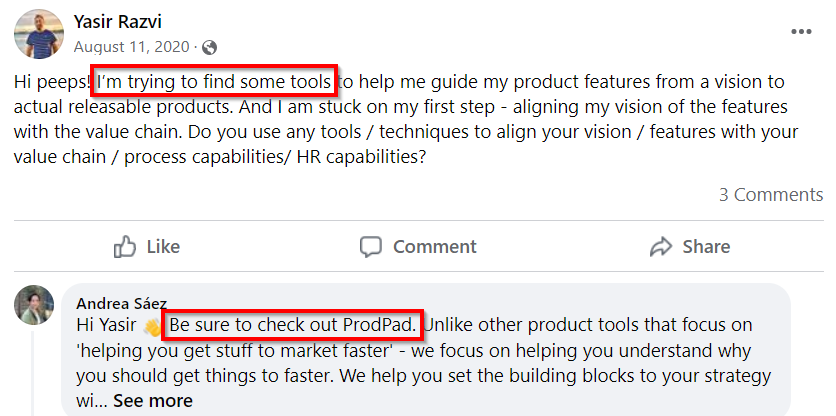
The Facebook group in the image above is for software product managers, where one of the members has asked for tool recommendations, and another group member has recommended ProdPad, a product planning service.
Example #2: Online review from a customer
Another common and valuable source of obtaining earned media is the organic reviews of your products your customers leave online.
Positive reviews (like those on review sites like Yelp, Tripadvisor, and Amazon) are also critical to the success of your products, as they influence more than 90% of the purchase decisions in customers.
As an illustration of this case, let’s look at a Monday.com review on G2.
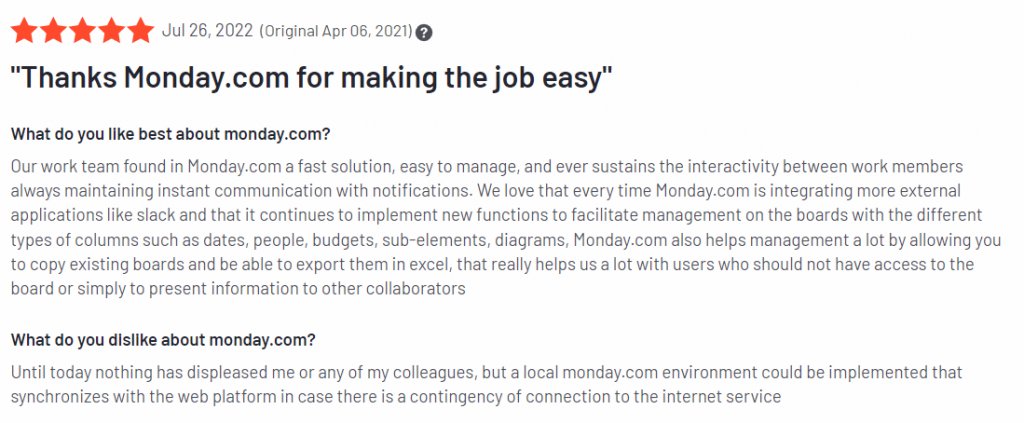
Here, the Monday.com customer expresses their opinion on the pros and cons of the service and praises its ease of use.
Example #3: Unpaid media coverage
Sometimes brands will collaborate with traditional media outlets and pay them to promote their products with press coverage and press mentions.
However, this is not always the case, as the media can talk about you organically, too, without the need to pay them any advertising fees if you have a story big and interesting enough.
Let’s show you an earned media example of this type from PCMag.com.
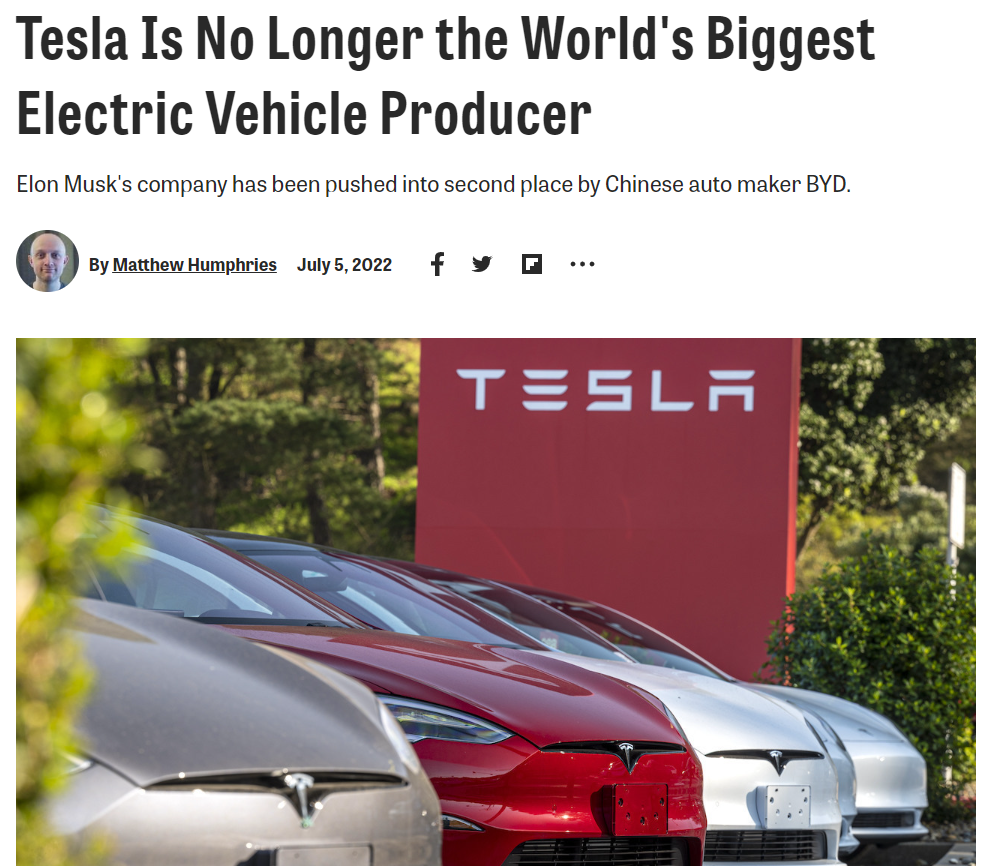
Tesla is used to making the headlines all the time, but, in this case, the earned media coverage was about the Chinese competitor of Tesla – a carmaker called BYD, as it had become the largest electric car producer in the world.
Example #4: User generated content on social media
We live in the age of social media, with 4.6 billion people using at least one kind of social media site in 2022.
Among the massive amount of content these users create on social media (e.g., Twitter, LinkedIn, etc.), we can also find many brand mentions and shoutouts.
Here is one of such social media posts that talks about Apple.

The person making this post is actually the tech macro-influencer Ramal with around 300K followers on TikTok.
In his post, Ramal is showcasing the new MacBook Air with the M2 chip he has just brought to his studio.
Example #5: Unpaid product reviews
Apart from sharing their opinions and thoughts about products on social media, some people go the extra mile to make complete product reviews and testimonials in the form of videos or blog posts.
Product reviews (including roundups) are a fairly common form of content for social media influencers, and our example is about one of them.
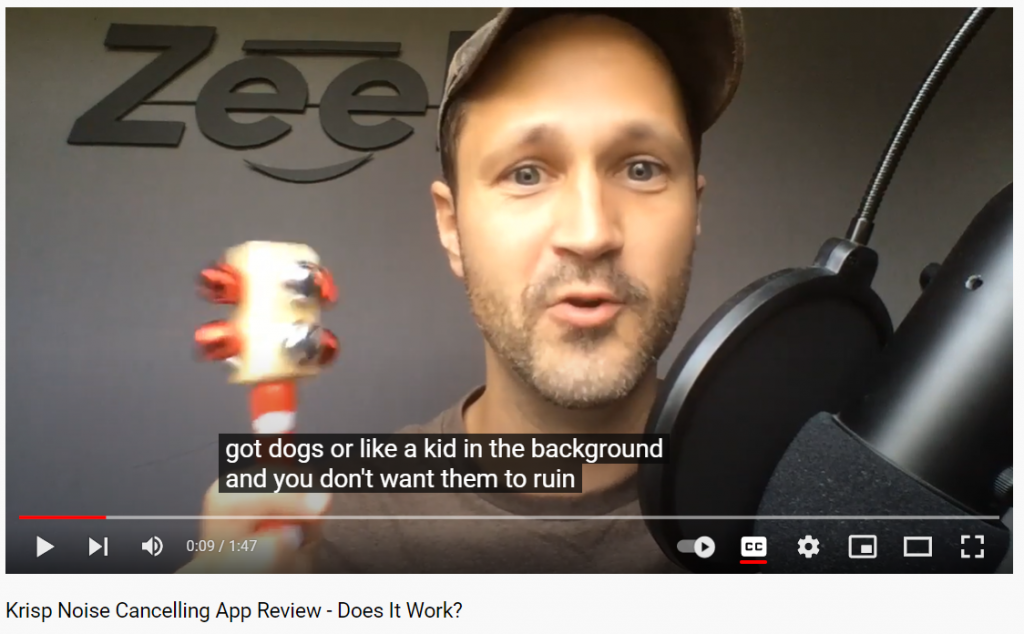
The video belongs to the nano-influencer channel Abound Social, with under 1,000 followers. In the video, the channel host demonstrates a noise-canceling app called Krisp by making various types of noises with musical instruments and talking on the microphone with the noise-cancellation on.
As we have a solid understanding of earned media types, we can move on to discussing the tactics that you can use to increase the share of earned media for your brand.
5 Ways to Get Earned Media
The theory says that if your products are good enough and they bring lots of value to their customer, you will naturally get substantial earned media, as both your customers and the media outlets will constantly talk about you.
However, you do not have to keep this process unmanaged, as there are many tactics letting you increase the rate at which you are getting your earned media.
Here are five ways to generate earned media.
Way #1: Participate in industry trade shows
Trade shows were an important platform for marketing your brand before the COVID19 lockdowns, and, fortunately, they are making a comeback now, given the eased restrictions on public events.
To understand the value you can get from participating in a conference, let us give you a couple of statistics:
- More than 80% of the people who attend trade shows have the buying capacity and intent.
- 65% of brands consider conferences as a significant channel for their marketing efforts.
Trade shows are also a place where you can meet many journalists and media outlets. This means that, apart from increasing your brand awareness among visitors who have relevant interests and match your target audience definition, you can also meet and talk to journalists that might end up preparing a news piece about you.
Way #2: Leverage social media
Social media is all over the place, we already know that. The question is how you can influence people there and encourage them to actively talk about you.
Fortunately, there are several earned media best practices that you can use to facilitate it on social platforms:
- Be an effective social media marketer by actively making posts and content appear more often on your follower’s feeds.
- Make sure your posts are interactive, get your followers to comment, and do social sharing like retweets and reposts.
- Don’t hesitate to start social media marketing campaigns with your own hashtags. If the campaign is successful on social media, the hashtag will start spreading like wildfire.
All of these activities help you become visible and compelling in the eyes of your followers, prompting them to actively talk about you and interact with your brand.
Way #3: Invest in SEO
When we speak about how to drive traffic organically to your site, the answer is surely SEO.
A well-executed search engine optimization strategy can push your website to the top positions in search engine results and help you create a steady and predictable inflow of high-intent organic traffic.
To earn you great rankings, an SEO strategy should include tactics such as:
- Link building and digital PR, via outreach and other strategies, foster the process of other websites giving you backlinks.
- Technical, structural, and copy optimization of your website.
- Creation and publishing of high-quality pieces of content and more.
If your business has a physical location and operates within a specific area (e.g., neighborhood or town), SEO experts will make sure that you will appear in the top results when people search your town for the products and services that you provide.
Way #4: Build relations through influencer marketing
Influencer marketing is a highly effective and rapidly-developing channel for promoting your products.
The effectiveness of this discipline relies on two key factors:
- Authority: Followers usually trust the knowledge and expertise of the influencer and consider their product recommendations authentic.
- Relevance: Influencers and bloggers, especially those specialized in a specific niche, have an audience that is highly interested in their niche. So, if you promote a product relevant to their interests, they are very likely to buy.
Other than helping you sell your products or services, influencers also help you increase your brand awareness and encourage their followers to discuss you or visit your page.
Way #5: Harness the power of content marketing
Producing quality content is not an easy feat. However, if we look at the benefits you can get from it, a content marketing strategy is worth every penny spent on it.
In terms of the said benefits of content strategy, here are several to prove our point:
- Compelling content (especially visual ones like infographics) is shareable, meaning other websites will pick and add it to their own content and link back to you, further expanding your reach.
- High-quality content creates trust and authority that solidifies your brand in the minds of your website visitors and content consumers.
And the combination of these two factors – reach and trust – enables you to generate earned media.
That is right – using one or multiple of these tactics will help you get more online mentions. But is getting earned media a perfect digital marketing strategy?
The answer is no, it is not perfect. Along with the many earned media benefits, there are also a couple of drawbacks that you need to be aware of.
3 Disadvantages of Earned Media
No marketing strategy or channel is perfect, and it would be naive to expect earned media to be perfect too.
The good news is that if you know about the disadvantages of earned media and are prepared to mitigate them, they should not be that big of a problem for you.
Here are the three main disadvantages you can encounter when working with earned media.
Disadvantage #1: You have no control
It is the real users and independent media who create your earned media content. You are not in partnership with them, and you are not paying them, so your powers to influence the content that they make are negligible.
Disadvantage #2: Negative mentions
There are no perfect products and services in this world, and this rule applies to you too. So be ready to face the reality of some people not liking whatever you offer and publishing negative reviews about you.
Disadvantage #3: Earned media is difficult to get
Although earned media is organic and authentic, your lack of direct control over its creation also means that, no matter what tactic you use to influence it, the effects will be much less significant than with paid advertising.
With the difficulties of earned media covered, let us move on to understanding how to measure it.
3 Earned Media KPIs to Measure Your Efforts
Tracking your earned media is critical, as it will help you evaluate the effectiveness of your efforts and improve them.
Here are some standard metrics you can track for your earned media.
- Number of mentions: It applies to both social media and blog/news article mentions.
- Estimated audience: You can estimate this by calculating the sum of the reach for all of your mentions.
- Sentiment: This score shows the overall positivity or negativity of your mentions.
Now that we know how to monitor earned media, we can move on to discussing its advanced tactics.
3 Advanced Tactics for a Better Earned Media Strategy
In case you have already tried the five earned media tactics we had in this guide and want to do something more elaborate, we have three more earned media strategies for you that are more advanced.
Tactic #1: Apply for industry awards
What can put you in news headlines better than winning an award?
Most industries have specialized associations and organizations that give out awards to the best performers or the most prominent players in their niche. So don’t hesitate to apply and take part in the award contests of your industry.
Tactic #2: Conduct original research
Doing original research is resource-consuming. But it is a sure way to earn lots of backlinks and social media mentions, as many creators and websites will use your findings in their content and give you credit.
One of the easy ways to get involved in this is the Help A Reporter Out that journalists use for conducting their research.
Tactic #3: Create brand awareness with paid media
Finally, you can rely on paid advertising to increase your brand awareness, which will generate earned media for you in the long term.
Now Over to You
Earned media is the result of having good products that resonate with people’s needs and a sustainable marketing strategy.
Although you cannot influence it directly, our guide gave you tricks that you can use to encourage more people, reporters, and influencers to talk about you.
Found this guide helpful? Our blog at Digital Marketers World is full of learning materials like this.

Sona Kalantaryan is a senior digital marketer with a creative past. Big fan of high cinema and well-optimized landing pages. She authors guides by sharing the best practices and does it the right way!
